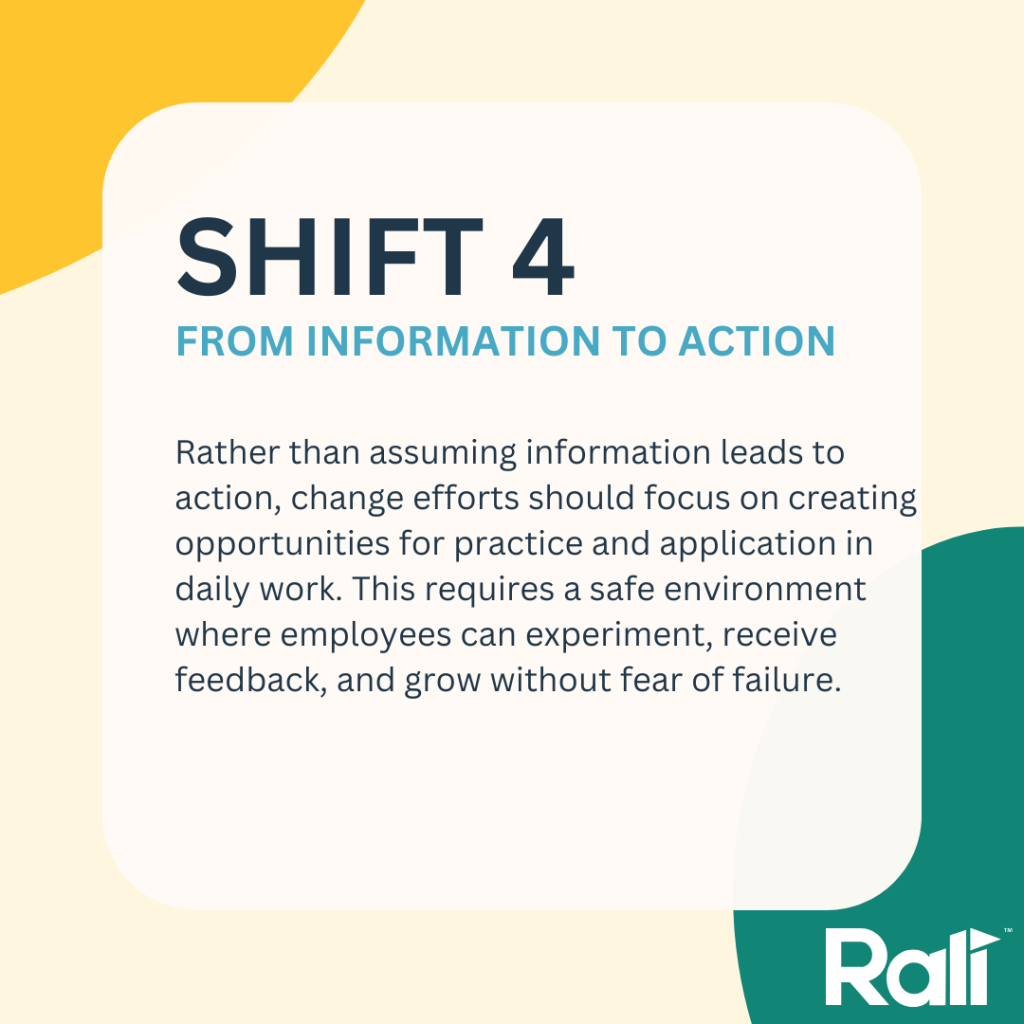The amount of information presented during times of change can be overwhelming. It is important not to assume that receiving information is the same as taking action. When things aren’t going well, the natural instinct is to share more information. However, this can create paralysis rather than progress. Instead of overwhelming teams with more details, we should shift our focus to creating opportunities for practice and application.

Change Management: From Information to Action
Change is most effective when individuals engage with new behaviors and expectations in their day-to-day work. Opportunities to practice new initiatives are more influential than discussing what to do. However, trying something new can feel risky. Questions like “what if it doesn’t work?,” “how will others react?,” and “what if I make a mistake?”; often hold people back.
Handling these concerns can determine the success of your change initiative. Establishing a “buddy” or “learning partner” is an effective strategy. A learning partner provides a supportive environment, offering feedback, coaching and accountability. This approach makes it safer to step outside comfort zones and fosters a culture of continuous learning.
Change Initiative Success: Empowering Action Through Leadership
Where does your change initiative stand? As we previously discussed, individual action is typically shaped by the team context. Leaders and managers play an essential role in creating action-oriented environments. Employees tend to take action based on the behaviors they view as encouraged and supported by their managers.
When leaders create opportunities for practice, it is important to be aware of what behavior they are encouraging. When leaders reinforce a “High Challenge – High Support” culture, employees experience meaningful growth, progress, and success. Employees acknowledge that the work is not necessarily easy, but they feel energized and recognize that their skills are being developed. On the other hand, leaders who reflect low-challenge and low-support often find their employees disengaged and unmotivated.
By transitioning from an information-heavy approach to an action-driven strategy, we can create change that is understood and actively implemented. Stay tuned for our shift 5 next week.





